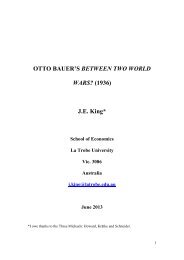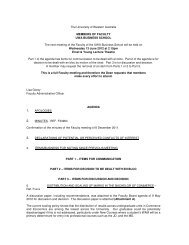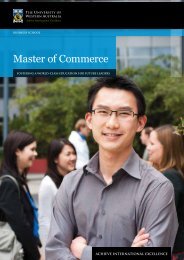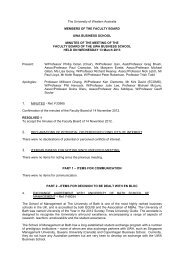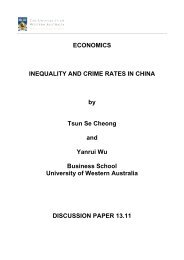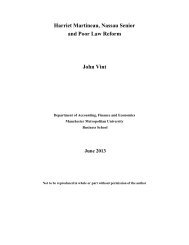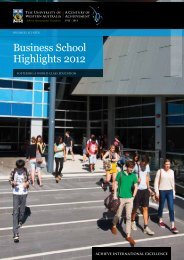A Dynamic Model for determining Inward Foreign ... - Business School
A Dynamic Model for determining Inward Foreign ... - Business School
A Dynamic Model for determining Inward Foreign ... - Business School
Create successful ePaper yourself
Turn your PDF publications into a flip-book with our unique Google optimized e-Paper software.
exchange rate between the Japanese Yen and Chinese Yuan. He suggests that the real<br />
exchange rate is one of the significant factors affecting Japanese FDI in China (2006, 207).<br />
What is more, Demmirbag et al use primary data from 145 affiliates of western MNfs in<br />
Turkey via a survey <strong>for</strong> the purpose of exploring the institutional incorporation of the host<br />
country and firm variable as determinants of the factors influencing perceptions of <strong>for</strong>eign<br />
affiliate per<strong>for</strong>mance. They find that financial incentives do not have any significant impact<br />
on the perceived per<strong>for</strong>mance of the affiliate (2007, 330). However, Tomlin uses the<br />
implications of the model of investment under uncertainty to examine the relationship<br />
between exchange rates and FDI in 207 U.S industries. He states that dollar appreciations<br />
are positively correlated with service FDI flows into the U.S (2008, 537). Additionally,<br />
Alfaro et al <strong>for</strong>malize a mechanism that emphasizes the role of the local financial market in<br />
enabling FDI to promote growth through linkages. They conclude that there is an increase<br />
in the share of high level growth in financially developed economies by using realistic<br />
parameter value (2010, 248). Nevertheless, Arratibel et al highlight that a negative effect of<br />
exchange rate volatility on FDI stock and negative relation between exchange rate volatility<br />
and FDI is even more negative <strong>for</strong> more open economies (2010, 11). Thus, after reviewing<br />
the related literature, the hypothesis is as follows:<br />
H 3a : There is a negative relationship between financial risks and inward <strong>for</strong>eign direct<br />
investment.<br />
2.2.4 Stock Market Price<br />
De Santis et al. (2004) and Klein et al. (2002) test stock market valuations as a determinant<br />
of aggregate and firm-level FDI, respectively, but use these valuations as proxy <strong>for</strong><br />
traditional FDI determinants – in particular intangible assets – or do not control <strong>for</strong><br />
traditional FDI determinants, and there<strong>for</strong>e do not test <strong>for</strong> a strict finance-FDI effect in the<br />
sense of Baker et al (2009). Baker et al note that relative wealth shocks of the type that<br />
results from exchange rate changes in Froot and Stein (1991) may also originate in stock<br />
market price misalignments. They discuss the possibility of an effect on FDI through a<br />
‘cheap finance’ channel (source-country overvaluation) or a ‘cheap assets’ channel (targetcountry<br />
undervaluation5), and find strong evidence in favour of a ‘cheap finance’ effect on<br />
annual aggregate US FDI flows over the 1974–2001 period.<br />
H 5a : There is a positive relationship between stock market price and inward <strong>for</strong>eign direct<br />
investment.<br />
7




